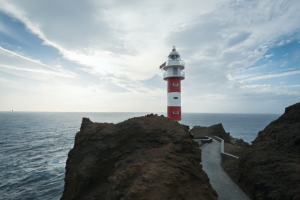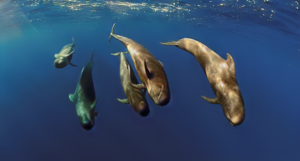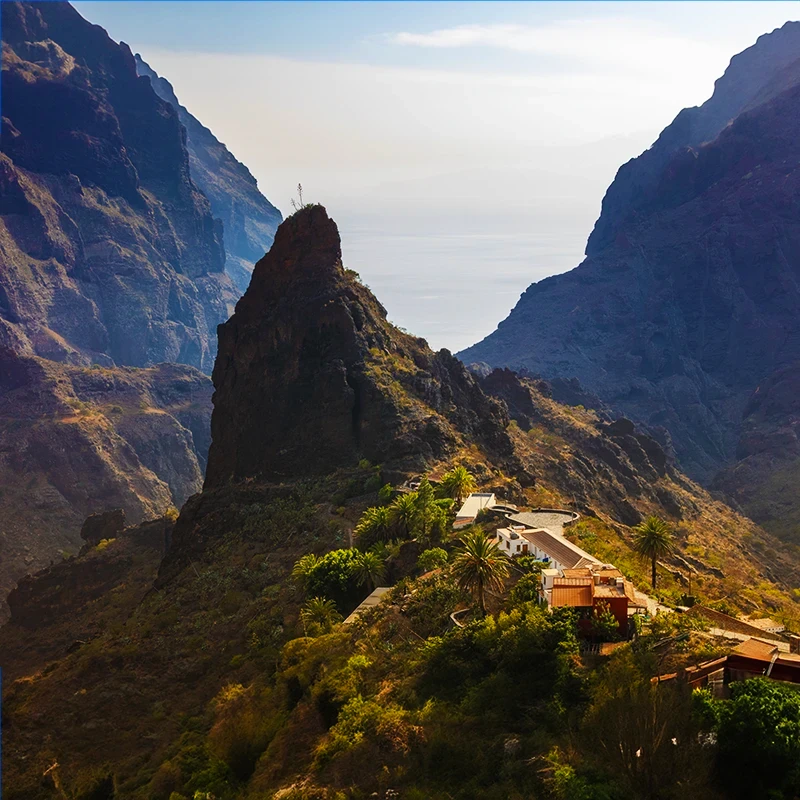
Introduction
Tenerife’s Natural Parks, a haven for the eco-conscious traveler, are a testament to the island’s ongoing commitment to conservation and eco-tourism. The largest of the Canary Islands, Tenerife is adorned with a variety of protected areas, from the iconic El Teide National Park with its unmatched landscapes to the ancient laurels of Anaga Rural Park. Each park not only offers visitors a chance to immerse themselves in nature’s unspoiled beauty but also plays a crucial role in the conservation of unique ecosystems and endemic species. The richness of Tenerife’s Natural Parks provides an unparalleled opportunity for those seeking to connect with nature.
Recent initiatives highlight Tenerife’s dedication to blending tourism with environmental stewardship. Programs like citizen science and sustainable tourism practices encourage visitors and locals alike to engage in activities that support conservation efforts. From marine mammal data collection to coastal waste management, these initiatives offer a hands-on approach to preserving Tenerife’s natural heritage while fostering a deeper connection with the environment. The vital role of Natural Parks in these efforts cannot be overstated, serving as both a sanctuary for biodiversity and a classroom for sustainability.
Moreover, the emphasis on environmental education within these parks equips participants with knowledge about the significance of biodiversity and the impact of human activities on natural habitats. Tenerife’s approach to eco-tourism serves as a model for sustainable tourism, ensuring that the island’s natural wonders continue to thrive for generations to come. Through the lens of Tenerife’s Natural Parks, visitors gain a deeper appreciation for the delicate balance of ecosystems and the importance of their preservation.
Natural Parks of Tenerife: A Guide for the Green Traveler

Tenerife’s Natural Parks, a haven for the eco-conscious traveler, are a testament to the island’s ongoing commitment to conservation and eco-tourism. The largest of the Canary Islands, Tenerife is adorned with a variety of protected areas, from the iconic El Teide National Park with its unmatched landscapes to the ancient laurels of Anaga Rural Park. Each park not only offers visitors a chance to immerse themselves in nature’s unspoiled beauty but also plays a crucial role in the conservation of unique ecosystems and endemic species. The allure of these Natural Parks draws travelers from around the globe, eager to explore their diverse landscapes and rich biodiversity.
Recent initiatives highlight Tenerife’s dedication to blending tourism with environmental stewardship. Programs like citizen science and sustainable tourism practices encourage visitors and locals alike to engage in activities that support conservation efforts. From marine mammal data collection to coastal waste management, these initiatives offer a hands-on approach to preserving Tenerife’s natural heritage while fostering a deeper connection with the environment. Central to these conservation efforts are the Natural Parks, which offer a protective haven for a wide array of species and ecosystems.
Moreover, the emphasis on environmental education within these parks equips participants with knowledge about the significance of biodiversity and the impact of human activities on natural habitats. Tenerife’s approach to eco-tourism serves as a model for sustainable tourism, ensuring that the island’s natural wonders continue to thrive for generations to come. Through educational programs and hands-on conservation efforts, Tenerife’s Natural Parks play a pivotal role in fostering a culture of sustainability and environmental stewardship among visitors and residents alike.
Teide National Park: A Volcanic Wonderland

The Teide National Park is perhaps the most iconic of all the Natural Parks on Tenerife. Dominated by the towering Mount Teide, the highest peak in Spain, this park is a magnet for those fascinated by volcanic landscapes. The park’s terrain, characterized by lava flows, craters, and rock formations, offers a moon-like landscape that’s both eerie and beautiful. Visitors can explore the park through various hiking trails or take a cable car to near the summit of Mount Teide for breathtaking views of Tenerife and beyond.
Conservation efforts within Teide National Park are crucial for preserving its unique flora and fauna. The park is home to a variety of endemic species, some of which are found nowhere else on Earth. These efforts ensure that the park’s delicate ecosystems are protected, making it a model for sustainable tourism practices. For the green traveler, Teide National Park is not just a destination; it’s a reminder of nature’s resilience and beauty.
Educational programs and guided tours within Teide National Park offer visitors insights into the park’s geological significance and its role in biodiversity conservation. These programs highlight the importance of preserving natural habitats and the role that visitors can play in supporting conservation efforts. By engaging with these programs, travelers can deepen their understanding of environmental stewardship and the global significance of Natural Parks.
Anaga Rural Park: A Journey Through Ancient Woodlands

Nestled in the northeastern tip of Tenerife, Anaga Rural Park is a bastion of biodiversity. This UNESCO Biosphere Reserve is renowned for its ancient laurel forests, which hark back to the Tertiary period. Walking through Anaga’s misty forests is like stepping back in time, with the dense greenery and the sound of endemic bird species adding to its mystical allure.
The park’s rugged landscape, with sharp peaks and deep valleys, offers some of the most stunning hiking trails on the island. These trails lead to remote villages, hidden beaches, and breathtaking viewpoints, allowing visitors to explore the diversity of Tenerife’s natural and cultural landscapes. For the green traveler, Anaga Rural Park is a testament to the island’s commitment to preserving its natural heritage and offers a truly immersive nature experience.
Conservation in Anaga Rural Park focuses on protecting its unique ecosystems and promoting sustainable development for its local communities. Efforts to preserve the laurel forests and their endemic species are key to maintaining the ecological balance of the park. Additionally, sustainable tourism initiatives help support the local economy, demonstrating how conservation and community development can go hand in hand.
Teno Rural Park: Where Sea Meets Sky

Teno Rural Park, located in the northwest corner of Tenerife, is a landscape of contrasts. From the towering cliffs of Los Gigantes to the tranquil waters of Masca Gorge, the park offers dramatic scenery that captivates nature lovers. The park’s unique geography, including its rugged coastline and volcanic mountains, makes it a favorite destination for those seeking adventure and natural beauty.
Conservation efforts in Teno Rural Park aim to preserve its diverse habitats, from coastal areas to high mountain environments. These efforts are vital for protecting the park’s flora and fauna, including several endangered species. Sustainable tourism practices, such as regulated hiking and responsible wildlife observation, are encouraged to minimize human impact on the park’s ecosystems.
For the green traveler, Teno Rural Park represents the harmonious coexistence of nature and human activity. The park’s traditional farming villages, with their terraced landscapes and ancient customs, offer a glimpse into Tenerife’s rural heritage. By visiting Teno Rural Park, travelers can experience the island’s natural beauty while supporting conservation and cultural preservation efforts.
Exploring Beyond the Natural Parks: Tenerife’s Hidden Gems

While Tenerife’s Natural Parks are undoubtedly the island’s main attraction for eco-conscious travelers, the region offers more than just its famed natural reserves. Beyond the boundaries of these well-preserved areas lies a plethora of hidden gems that further accentuate the island’s commitment to natural beauty and conservation. These lesser-known spots offer tranquil retreats away from the more frequented paths, allowing visitors to experience the island’s rich biodiversity in a more intimate setting.
One such example is the coastal area of El Médano, known for its natural beaches and as a haven for wind and kite surfers. Though not designated as a Natural Park, El Médano’s commitment to maintaining its natural landscape in the face of tourism pressure embodies the spirit of conservation that pervades Tenerife. Similarly, the Masca Valley, with its breathtaking ravine and traditional Canarian architecture, offers a glimpse into the island’s geological and cultural history outside the formal confines of its parks.
Additionally, Tenerife’s commitment to sustainability extends to its marine life, with several initiatives in place to protect the surrounding Atlantic waters. The island is a pioneer in eco-tourism, offering responsible whale and dolphin watching tours that respect the natural habitat of these magnificent creatures. This dedication to conservation both on land and at sea highlights Tenerife’s broader commitment to environmental stewardship, making it an ideal destination for the green traveler looking to explore beyond the traditional natural park boundaries.
Exploring the Hidden Valleys: Rural Beauty Unveiled

The serene and less trodden paths of Tenerife reveal the island’s rural beauty, encapsulated within the hidden valleys and secluded landscapes. Venturing into areas such as the picturesque Valle de Güímar or the enchanting Valle de la Orotava, travelers uncover the rich tapestry of Tenerife’s agrarian history, dotted with vineyards, terraced farms, and traditional Canarian architecture. These valleys are a testament to the harmonious relationship between man and nature, where sustainable farming practices have preserved the land’s fertility and charm. Initiatives in these regions focus on eco-agriculture and promoting local produce, inviting visitors to taste the flavors of Tenerife while contributing to the local economy and conservation efforts.
In Valle de Güímar, a region granted the Designation of Origin status in 1996, the vineyards stretch from the coast up to some of the highest vine-growing altitudes in Europe. The local vineyards, such as Bodega Comarcal Valle de Güímar, thrive on volcanic soils and benefit from the trade winds, creating wines with a distinctive character. This area’s commitment to wine production reflects Tenerife’s broader dedication to sustainable agricultural practices and conservation.
Coastal Conservation: Safeguarding Marine Biodiversity

Tenerife’s commitment to environmental preservation extends to its azure waters, home to a spectacular array of marine life. The island’s coastal conservation initiatives, such as the Teno-Rasca marine strip, aim to protect the fragile marine ecosystems and the diverse species that inhabit them, including dolphins, whales, and unique varieties of fish and coral. Eco-tourism activities like responsible snorkeling, diving, and guided boat tours are designed to educate visitors about the importance of marine conservation while offering unforgettable experiences of the underwater world. Through these efforts, Tenerife ensures the protection of its marine biodiversity, emphasizing the critical role of the oceans in global ecological balance.
Incorporating these new sections into the article enriches the narrative by highlighting Tenerife’s extensive efforts in environmental conservation, both on land and at sea. It paints a fuller picture of the island as a prime destination for eco-conscious travelers who seek to explore and preserve the natural world. Tenerife’s natural parks, hidden valleys, and coastal regions collectively offer a mosaic of experiences that underscore the island’s beauty and ecological significance, inviting travelers to partake in a journey that is both enlightening and inspiring.
Conclusion: A Commitment to Conservation
Tenerife’s Natural Parks are not just destinations; they are sanctuaries that demonstrate the island’s commitment to preserving its unique natural heritage. For the green traveler, these parks offer an opportunity to explore breathtaking landscapes, engage with conservation efforts, and support sustainable tourism practices.
Moreover, by visiting Tenerife’s Natural Parks, travelers contribute to the protection of these precious ecosystems, ensuring that they continue to inspire and sustain future generations. With each visit, the importance of these Natural Parks in the global effort to preserve our planet’s biodiversity and natural beauty is reaffirmed.
















